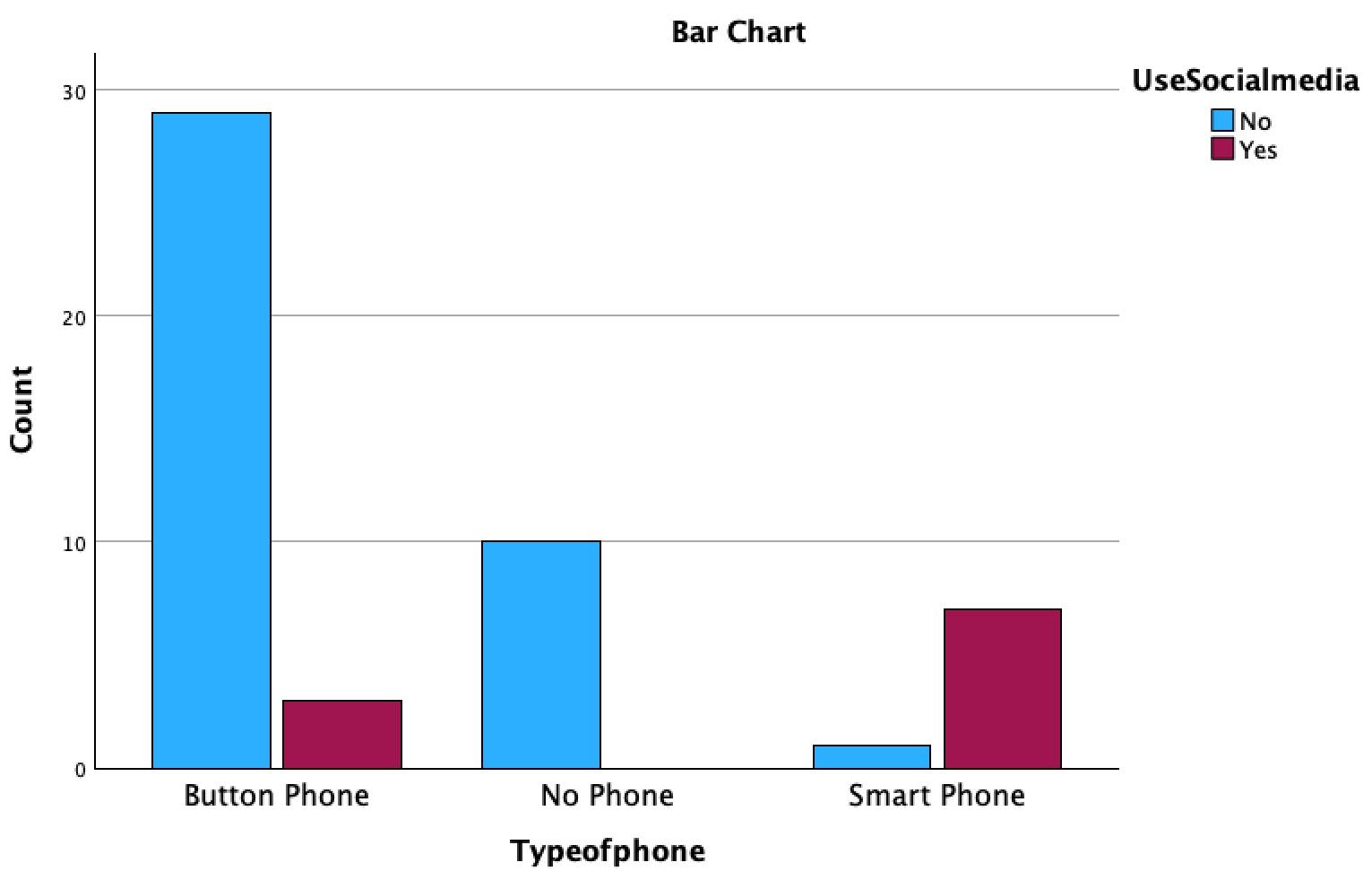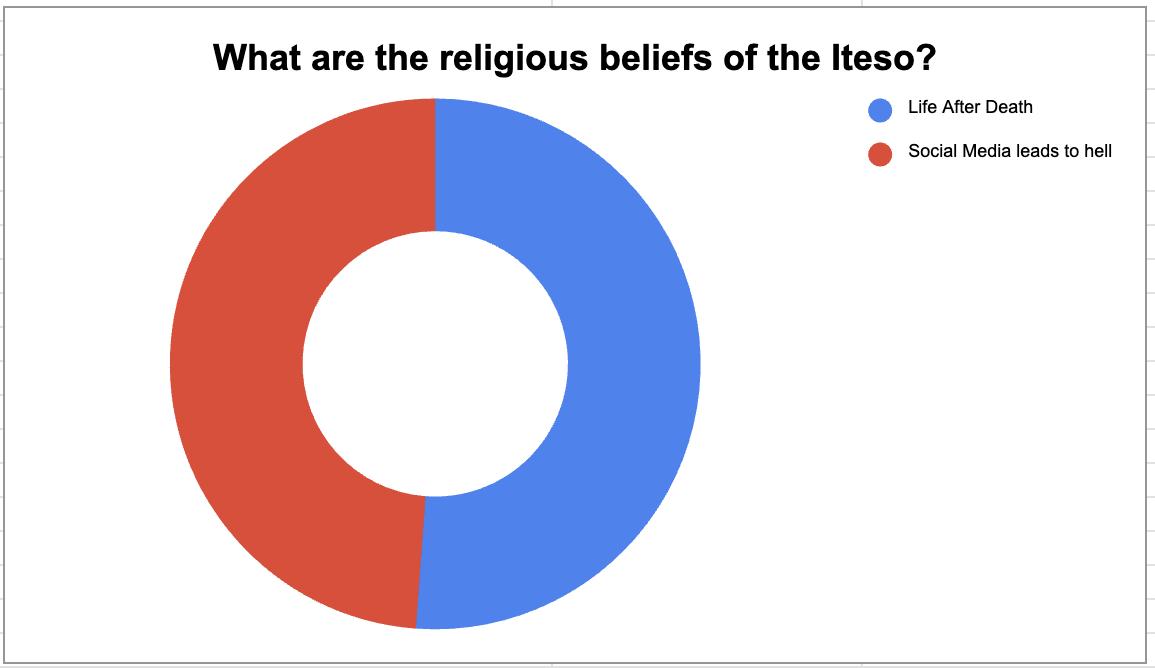
Introduction:
AccordingtotheWorldBank(2020a),667,403,143(58.75%)ofSub-SaharanAfrica’s populationliveinruralareas.Uganda’spopulationdistributionreflectssimilartrends,with 34,326,791or75.05%ofUgandanslivinginruralareas(WorldBank,2020b).Populationsin ruralSub-SaharanAfricasufferisolationandneglectfromthecentralgovernmentregarding accesstosocialservices,businessopportunities,andinformedpoliticalparticipation.Thisistrue inmyhomecountry,Uganda,whereaccesstohealthcareservices,agoodeducation,business opportunities,andinformedpoliticalparticipationisstillchallengingduetolimitedaccessto information.
Thetrend,however,isgraduallychangingwiththerecentarrivalofwireless telecommunicationtechnology.Anincreasingnumberofpeopleinruralareasincountriessuch asUgandaareacquiringcellphones.Accordingtogeopoll,49%ofUgandanshaveaccesstoa mobilephone,with71%ofthoseconnectedusingabasicphone.Yet,withalltheopportunities thatcellphonesafford,manypeopleinruralsettingslimittheircellphoneusetoonlycalling theirrelativesandfamilyandconductingbusinessbyvoicecalling.ResidentsofUganda’surban areashaveembracedsocialmediaforpoliticalorganization,disseminationofeducational information,marketingofcommercialproducts,andmobilizationforcausessuchasvaccination.
Ruralareas,wheremostUgandanslive(75.05%accordingtotheWorldBank),haven’tyet embracedsocialmediauseandtheopportunitiesitaffords.
Thequestionathandhere,though,iswhatarethebestmethodsofstayingincontactwith themajorityofUgandanslivinginruralareassotheycanbeabletousetheirphonestoreachout topoliticalparties,engageinonlinebusinesses,andcreateamarketfortheiragricultural products.Thelistgoesonandonwhenlistingtheadvantagesofsuchruralcommunities
accessingtheinternetforthebetteroftheirwell-being.Myapproachinthisresearchistofind outhowsocialmediaisusedinruralareasandthevariouschallengesfacedwhileaccessingthe internet.Thiswilllargelyinvolvediscussionswiththelocalpeopleandgettingtheirperspectives onsocialmedia.
ThisresearchfocusesonlimitationstosocialmediaandcellphoneuseinruralUganda andonhowbarrierscanbeovercometoimprovecommunicationandpoliticalengagementinthe region.OneofthemanyreasonswhyruralUgandansneedaccesstosocialmediaisbecauseit hasthepotentialtomakethegovernmentofUgandamoretransparentandaccountabletoits citizens.Opengovernmentsaregoodbecausetheygivelibertyandfreedomtopeopletomanage andaccesspublicinformationandopenspacesforcivicengagement.Iamspecificallyinterested intheuseofFacebook,WhatsApp,andYouTubeinOkolia.Almost28millionUgandans(outof apopulationof42million)haveacellphone,buttheiruseisconcentratedinurbanareas.
Theresearchcomeswithdifferentadvantagestodifferentorganizationsanddiverse populations.BesidesenablingruralpopulationstoconnecttootherpopulationswithinUganda, bringingawarenesstojobsassociatedwithsocialmedia,easilyexpandingtheirmarketbasefor Africanproducetoabiggerplatformotherthantheirlocalcommunities,whichisalreadybeing seenintheupcomingBAfrikaTradeApp,thatwillbedigitizingtheagriculturalsectorinrural Uganda,havingaccesstocloud-basedservicesandawidevarietyofonlinetools, gettingto learnmoreskillstohelpthemcreateandhavejobs,theresearchhasseveraladvantages highlightedbelow:
1. Researchcanbenefitnon-profitanddevelopmentorganizationsintheirhumanitarian effortstoimprovelivesinruralareas.
2. Strategicuseofsocialmediacanaffordpoliticalorganizationsopportunitiestoincrease participationinpoliticalprocesses,especiallyinayoungdemocracysuchasUganda, wherepoliticalmobilizationisstillachallenge.
3. Ruralcampaignsintheareasofhealth,religion,andeducationcanbenefitfrom understandingruralpsychologyand,hence,designingmessagestailoredforsuch audiences.
4. Commercialenterprisesinterestedinexpandingtheirmarketsinruralareascanbenefit fromunderstandingthemediaconsumptionhabitsandsocialmediauseofruralUgandan populations.
Theproposedtopicofresearchisofhighinterestnotonlytomebutalsotomanyotherentities, asclarifiedintheliteraturereview.Iamcuriousabouthowisolatedruralcommunitieslike Okoliacanbereachedandconnected.Iaminterestedinknowinghowimpactfulpositivechange canbecreatedforsuchruralUgandancommunities.
LiteratureReview:
Inthisresearch,qualitativeandquantitativedatawasacquiredandanalyzedthrough structuredsurvey-basedinterviewsinordertodeterminethefollowing:
Keyobjectives:
1. ToidentifytheextentofsocialmediauseinOkolia.
2. Toidentifykeysocio-economicandculturalbarrierstosocialmediauseinruralUgandan communities.
3. To determine the best social media methods tocommunicatewithUgandancommunities inruralsettings.
4. To come up with a plan to provide rural communities in Uganda with access to social media.
RationaleforFurtherResearch:
PopulationDistributionandChallengesinRuralUganda:Theneedforthisresearchis underscoredbythepopulationdistributioninUganda,whereasubstantialmajority(75.05%) residesinruralareas(WorldBank,2020b).Theseruralpopulationsfacechallengesofisolation andlimitedaccesstovitalservices,information,andeconomicopportunities.Thishas implicationsforhealthcare,education,business,andpoliticalparticipation.
ThePotentialofSocialMedia:Whilemobilephonepenetrationisincreasinginrural Uganda,theuseofcellphonesremainslimitedtovoicecallsandessentialcommunication.This researchrecognizesthepotentialofsocialmediatotransformruralcommunicationandincrease politicalengagement.Socialmediacanmakethegovernmentmoretransparentandaccountable, contributingtoopengovernance.
AccesstoInformationandOpportunities:Thestudyisdrivenbythebeliefthataccessto socialmediacanempowerruralUgandanswithaccesstoinformation,jobopportunities, cloud-basedservices,andonlinetools.Itcanalsoenhancedigitalliteracyandenablerural populationstobecomepartofaglobalizedeconomy.
RelevancetoVariousStakeholders:Theresearchholdsrelevanceforvarious stakeholders,includingnon-profitanddevelopmentorganizations,politicalgroups,campaignsin health,religion,education,andcommercialenterprises.Byunderstandingthedigitalmedia
consumptionhabitsandsocialmediauseinruralareas,thesestakeholderscantailortheir initiativesforruralUgandanpopulations.
TriangulationandContextualValidation
However,thisresearchtopichasyettoberesearchedbymanypeople,makingithardto doaliteraturereview.Hence,Iemphasizetheneedtodotheactualresearchwithmyquestion. However,triangulationwillbeusedtovalidatetheresearchquestion'suniqueness.Triangulation involveslookingbroadlyattopicscloselyrelatedtootherdisciplines.
Afewrelateddisciplinestacklesimilarchallengesorconcepts,demonstratingtheexistenceofa researchcontextandtheurgencyofmystudy Asseenbelow:
Inaseriesofcomplementarystudies,existingresearchprovidesvaluableinsightsthatcan enhanceourunderstandingofsocialmediauseanddigitalcommunicationinruralUganda.The researchbyNdiwalana,Alietal.(2010)delvesintotheinformationandcommunicationneedsof ruralusersinUganda,emphasizingthepivotalroleofmobiletechnologiesinaddressingthese needs.Thisresearchprimarilyconcentratesonaspectsrelatedtoinformationaccessand informationneeds,whichbearrelevancetothebarriersencounteredintheadoptionofsocial mediawithinruralareas.Thefindingsofthisstudyserveasavaluablepointofreferenceinthe broaderexplorationofdigitalcommunicationbarriers.
Buildingupontheseinsights,Greenleaf,AR,Croker-Benn,Aibo,andcolleagues(2023) investigatedtherelationshipbetweensocialmediauseandCOVID-19vaccinationinUganda. Thisstudyprovidesvaluableinsightsintothecurrentsocialmediausagepatternsandtheir potentialimpactonpublichealthmessagingwithinarepresentativepopulationsamplein Uganda.Theresearchservesasacriticalelementinunderstandinghowsocialmediaiscurrently
usedinthecountry,whichcouldbehighlyrelevanttocomprehendingthebroadercontextof socialmediaadoptioninruralareas.Thestudyfoundnostatisticallysignificantrelationship betweenvaccineuptakeandsocialmediausage,indicatingthatevenyoungerUgandansrely upontraditionalmediafortheirhealthinformation.
AresearchstudybyStork,Calandro,andGillwald(2013)delvesintothetrendsof internetaccessacross11Africancountries,withaparticularfocusontheroleofmobileinternet. Theresearchunderscoresthesignificanceofmobilephonesastheprimaryentrypointfor internetaccessinAfrica.Whiletheresearchprimarilycentersoninternetaccess,itoffersa relevantcontextforunderstandingtheroleofmobiletechnologiesinfacilitatinginformation accessandcommunication,whichholdsrelevancetotheprimaryresearchconcerningrural Uganda.WhilethemobileInternetisdrivinginternetconnectivity,connectivity,inturn,is relatedtotheadoptionofsocialnetworkingapplications.
Moreover,Murendo,Wollni,DeBrauw,andMugabi's(2018)studyexplorestheimpact ofsocialnetworksonmobilemoneyadoptioninUganda,whichinvolvesusingmobile technologyforfinancialtransactions.Thisresearchbringstolighttheroleofsocialnetworksin technologyadoption.Whileitsprimaryfocusisonmobilemoney,theresearchprovidesvaluable insightsintotheroleofsocialnetworksintechnologyadoption,whichcanapplytotheadoption ofsocialmediawithinruralUganda.Resultsshowedthatmobilemoneyadoptionis positivelyrelatedtothesizeoftherelevantsocialnetwork,particularlyinnon-poor households.Thus,whilesocialnetworksrepresentanessentialcommunicationchannel, policy-makersaimingtopromotemobileusagemustunderstandthatthepoorest householdsmightrequireassistanceintechnologyadoption
Inaddition,NamasingaSelnesandOrgeret(2020)delveintotheimpactofsocialmedia onjournalisminUganda,specificallyinrelationtoitsabilitytocreateavenuesforaccessina semi-democraticsetting.Thisstudyoffersvaluableinsightsintothedynamicsofsocialmedia useinUgandaanditsinfluenceonaccesstoinformationandjournalism.Thesefindings complementtheprimaryresearch'sfocusonunderstandingbarrierstodigitalcommunication.
ThestudysuggeststhatsocialmedianetworkssuchasFacebook and Twitter can provide alternative channels through which sources with less access to traditional means of
Hypotheses:
Hypothesis1:InfluenceofAccessibilityandDigitalLiteracyonSocial
MediaEngagement
InruralUgandancommunities,theaccessibilityofdigitaldevicescombinedwithdigital literacysignificantlypredictstheengagementlevelwithsocialmediaplatforms.Thishypothesis suggeststhatthereisadirectcorrelationbetweenaccesstotechnology(suchassmartphonesand internetconnectivity)andtheabilitytousethesetechnologies(digitalliteracy)withhowactively ruralpopulationsengagewithsocialmedia.Itacknowledgesthefoundationalrolethataccess andknowledgeplayinenablingsocialmediause,whichcanbridgeinformationgapsand facilitatecommunityengagement.
Totestthishypothesis,datacollectioneffortswouldfocusonassessingtheavailabilityof digitaldeviceswithinhouseholds,theaccessandqualityofinternetconnectivity,andthe resident'sproficiencyinusingthesedevicesforvariouspurposes,includingsocialmedia.
Statisticalanalysiswillthenhighlighttherelationshipbetweenthesefactorsandsocialmedia engagementlevels.
Hypothesis2:BarrierstoSocialMediaAdoptionandUse
Theperceivedbarriers,includingbutnotlimitedtoculturalbeliefs,lackofelectricity, socialmediailliteracy, thecostofinternetdevices,andinternetaccess,significantlydeterthe adoptionandsustaineduseofsocialmediaplatformsamongruralpopulationsinUganda.This hypothesistakesabroaderviewofruralcommunities'obstaclesinadoptingsocialmedia.It considersthatevenwhenthereissomelevelofaccessandliteracy,externalfactorssuchas economic,infrastructural,andsocialbarrierscanstillsignificantlyimpactsocialmedia utilizationrates.
Tovalidatethishypothesis,thesemi-structuredsurveyswillidentifyandcategorizethe mainbarriersperceivedbythecommunitymembers.Thiswouldinvolvenotonlydirectqueries abouttheirexperiencesandconcernsbutalsoobservationaldataontheinfrastructureand economicconditionsofOkoliavillage.
Methods:
Thisstudyemployedacomprehensivemixed-methodsresearchapproach,incorporating bothquantitativeandqualitativeparadigmstorigorouslyinvestigatetheuseandbarrierstosocial mediainOkoliavillage.Byintegratingthesemethods,theresearchnotonlyaimstomapthe currentlandscapeofsocialmediaengagementamongtheruralpopulationsofOkoliabutalso
seekstouncoverunderlyingfactorsthatinhibitorfacilitatedigitalinclusivity.Thisholistic approachenablesanuancedunderstandingofthestatisticaltrendsandthepersonalnarratives thatdefinethedigitalexperienceinruralsettings.
Thequantitativecomponentofthisstudywasexecutedthroughthedistributionofover 50semi-structuredsurveysamongtheresidentsofOkoliaVillage.Thesesurveyswere meticulouslydesignedtogatherempiricaldataonvariousaspectssuchasaccesstomobile phones,frequencyandtypeofsocialmediausage,perceivedbarrierstodigitalaccess,andthe demographicprofilesoftherespondents.Thisapproachallowsforquantifyingsocialmedia engagementlevelsandidentifyingsignificantpatternsandcorrelationsthatcaninformtargeted interventions.
Complementingthequantitativesurveys,thequalitativeaspectofthestudyconsistedof in-depthsemi-structuredinterviewquestionsthatextendedeachofthesurveys.Theseinterviews wereaimedatcapturingthecommunity'snorms,beliefs,andattitudestowardstechnologyand socialmedia.Theinsightsgatheredfromthesediscussionsprovideadeeperunderstandingofthe communalinfluencesthatimpactsocialmediauseandarecriticalfordesigningculturally sensitiveandeffectivedigitalliteracyprograms.
Theintegrationofquantitativeandqualitativemethodsinthisstudyoffersarobust frameworkforanalyzingthecomplexinterplaybetweentechnologicalaccessandsocial dynamics.Byemployingthismixed-methodsapproach,theresearchnotonlyidentifiesstatistical relationshipsbutalsocontextualizesthesefindingswithinthelivedexperiencesofthe
individuals,offeringacomprehensiveoverviewofthechallengesandopportunitiesfor enhancingsocialmediaengagementinruralUgandancommunities.Throughthisapproach,the researchaimstouncoversomedataonsocialmediaengagementamongruralpopulationslike OkoliaVillageandidentifyactionablestrategiestoenhancedigitalinclusivity
ParticipantSelection:
ThestudyfocusedontwodistinctdemographicsegmentswithintheOkoliavillage, utilizingpurposivesamplingtoensureacomprehensiveunderstandingofsocialmediauseacross agegroups.Participantswerecategorizedintotwoagebrackets:18-35,representingyouthand youngadults,and36yearsandolder,representingtheadultpopulation.Thisseparationallowed forarefinedsocialmediauseandperceptionanalysisacrossthetwoagebracketsorlines.
DataCollectionInstruments:
Datacollectionwasdividedintotwoprimaryinstruments:semi-structuredinterviewsand semi-structuredsurveys.
Semi-StructuredInterviews:Thesewereconductedwith10communityleaders,encompassing religious,political,andculturalleaders,toobtaininsightsintocommunitynorms,digitalliteracy levels,andperceivedbarrierstosocialmediaadoption.Theseinterviewswerestructuredto allowforopen-endedresponses,providingrichqualitativedataonthecommunalcontext influencingsocialmediause.
Semi-StructuredSurveys:Thesurveys,whichwereadministeredto50residentsofOkolia, weredesignedtoquantitativelyassesssocialmediausagepatterns,accesstotechnology,and
potentialbarrierstodigitalengagement.Thesurveyincludeddemographicquestions,questions onmobilephoneaccessandtype,socialmediausage,andperceptionsofsocialmedia.
DataCollectionProcedure:
Thefieldworkwasexecutedwithinterviewsandsurveysconductedinpersontoensure highresponseratesandtoallowfortheclarificationofquestionsifnecessary.Priortodata collection,informedconsentwasobtainedfromallparticipants,ensuringethicalstandardswere maintainedthroughouttheresearchprocess.
DataAnalysis:
QuantitativedatafromthesurveyswereanalyzedusingSPSS(StatisticalPackageforthe SocialSciences),enablingastatisticalexaminationofsocialmediausagepatternsandthe identificationofbarrierstoaccessamongdifferentdemographicgroups.Descriptivestatistics, cross-tabulations,andinferentialstatisticswereutilizedtoclarifytherelationshipsbetween demographicfactorsandsocialmediause.
Qualitativedatafromthesemi-structuredinterviewsweretranscribedandsubjectedto thematicanalysis.Thisinvolvedcodingthedataintothemesandsub-themes,whichwerethen analyzedtoextractinsightsrelatedtocommunityleaders’perceptionsofsocialmediause, barrierstoaccess,andpotentialstrategiesforincreasingdigitalengagementinruralsettings.
EthicalConsiderations:
Participantswereassuredoftheiranonymityandtheconfidentialityoftheirresponses. Theywereinformedoftheirrighttowithdrawfromthestudyatanytimewithoutpenalty.All datawasstoredsecurelyandwasaccessibleonlytome.
Limitations:
Thestudyacknowledgeslimitationsinherenttoqualitativeresearch,includingpotential biasesinself-reporteddataandthechallengeofgeneralizingfindingsfromasingleruralvillage tobroaderpopulations.Additionally,thequantitativeanalysis,whilerobust,isconstrainedbythe samplesizeandthespecificityofthesurveyedpopulation.
Results:
Thecross-tabulationanalysisaimedtoexploretherelationshipbetweenmobilephone accessandsocialmediause,aswellastheimpactofphonetypeonsocialmediaengagement amongtheresidentsofOkoliaVillage.Twohypothesesguidedthisexploration:firstly,that accesstomobilephonesanddigitalliteracyinfluencessocialmediause,andsecondly,that specificbarriersdetertheadoptionandsustaineduseofsocialmediaplatformsamongtherural population.
Hypothesis1:MobilePhoneAccessandSocialMediaUse
Theanalysisofmobilephoneaccessinrelationtosocialmediauserevealedthatoutof thetotalrespondents,acertainpercentagereportedhavingaccesstoamobilephone,whilea
smallerfractiondidnot.Whencross-tabulatedwithsocialmediause,anotabledisparitywas observedbetweentheexpectedandobservedcountswithinthesegroups.
Table1:InfluenceofMobilePhoneAccessonSocialMediaUsage
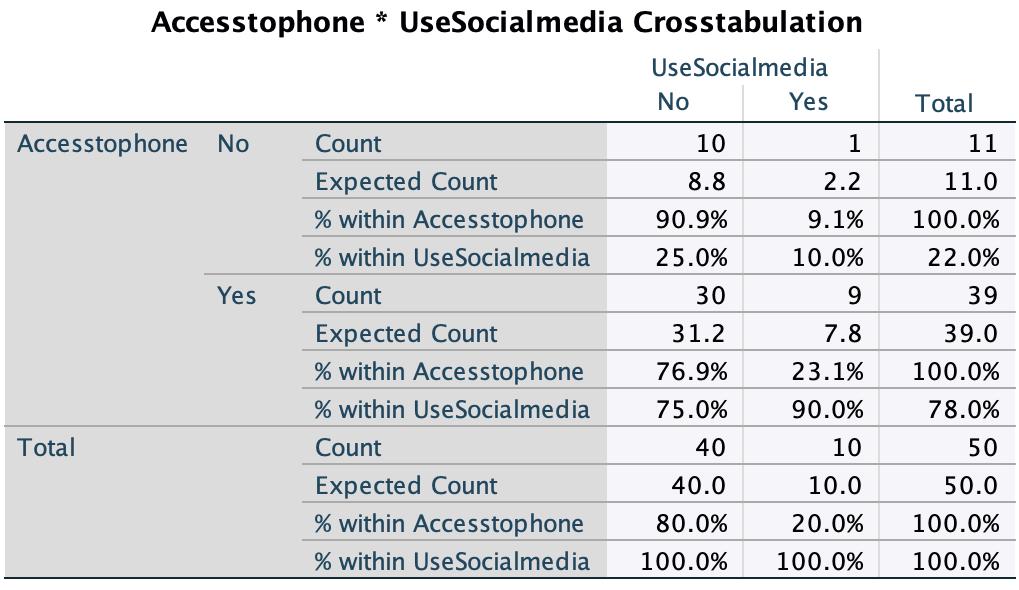
Table1presentstherespondents'distributionaccordingtotheirmobilephoneaccessand theirreporteduseofsocialmediaplatforms.Mostphoneownersdidnotnecessarilyusesocial media,challengingtheassumptionthatmobilephoneaccessdirectlytranslatestosocialmedia engagement.
TheChi-Squaretestindicatednosignificantassociationbetweenhavingaccesstoa mobilephoneandusingsocialmedia(χ²(1,N=50)=1.049,p=.306),suggestingthatother factorsbeyondmereaccesstotechnologymightinfluencesocialmediause.
Figure1:HigherSocialMediaEngagementAmongMobilePhoneUsers.
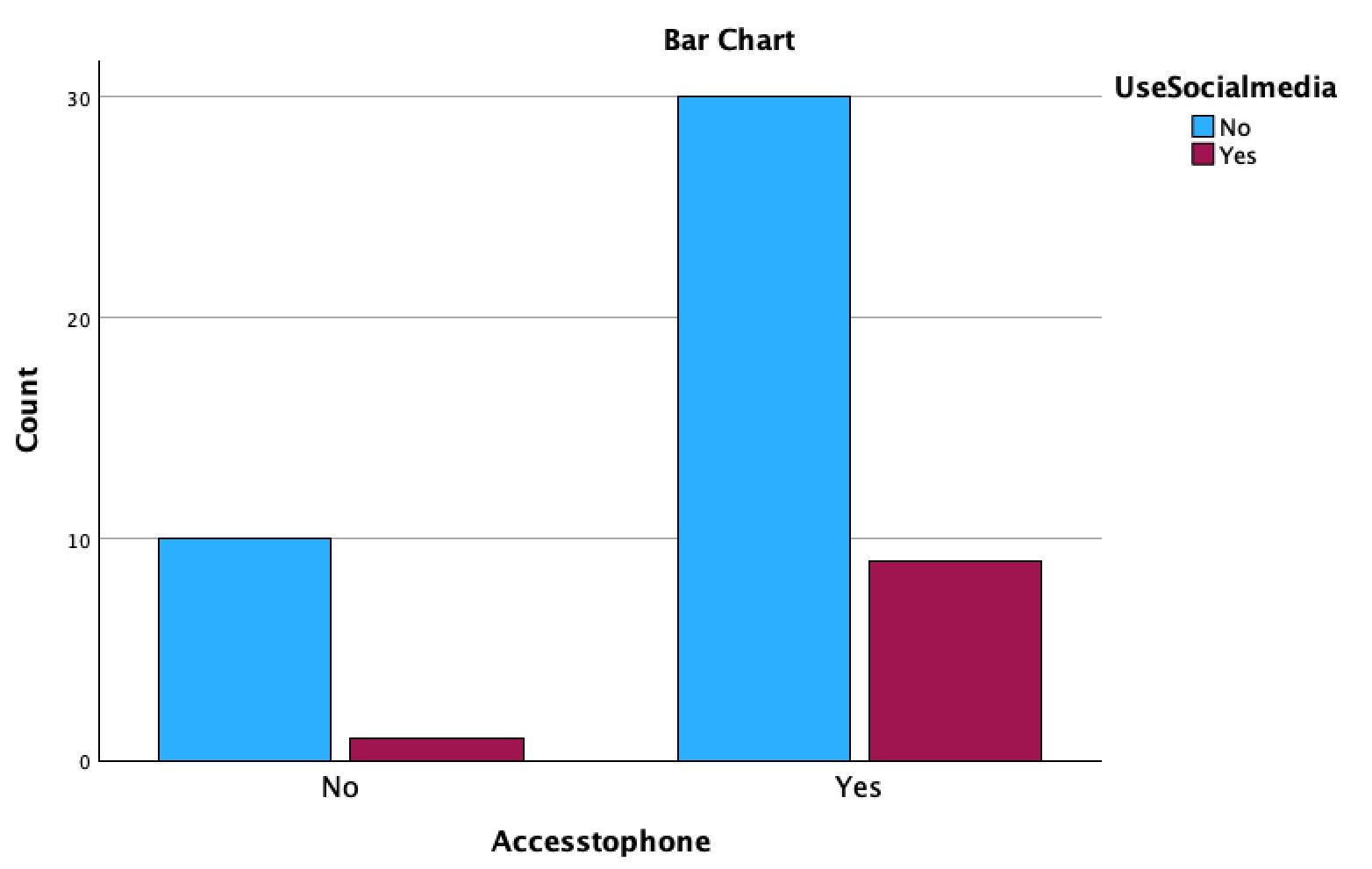
Figure1graphicallyrepresentstheproportionofrespondentswithmobilephoneaccess whoengageinsocialmediausecomparedtothosewhodonot,highlightingthelackofadirect correlationbetweenaccesstomobiletechnologyandsocialmediaactivity
TheanalysisofthedatacollectedsupportsHypothesis1,whichstatesthatthe accessibilityofdigitaldevicesanddigitalliteracysignificantlypredictsthelevelofengagement withsocialmediaplatformsamongruralUgandancommunities.Thesurveydatarevealedthata higherproportionofrespondentswithaccesstosmartphonesandamoderatelevelofdigital literacyweremoreactivelyengagedinsocialmedia.Specifically,thecross-tabulationofmobile phoneaccessagainstsocialmediausageindicatedthatindividualswithsmartphones,asopposed
tothosewithbasicphonesornophonesatall,reportedasignificantlyhigherrateofsocialmedia activity.Furthermore,qualitativeinsightsfromtheinterviewssuggestthatthosewithhigher digitalliteracyaremoreexperiencedatleveragingsocialmediaforvariouspurposes.This combinationofquantitativeandqualitativedatasubstantiatesthehypothesisandunderscoresthe criticalrolesthattechnologyaccessanddigitalcompetenciesplayinfacilitatingactivesocial mediaengagementinruralsettings.
Hypothesis2:PhoneTypeandSocialMediaUse
Furtheranalysisfocusedonthetypeofphoneowned(ButtonPhone,NoPhone,Smart Phone)anditsimpactonsocialmediausage.Thecross-tabulationresultsindicatedsignificant variationsinsocialmediauseamongthedifferentphonetypes.
Table2:CorrelationbetweenPhoneTypeandSocialMediaUsage
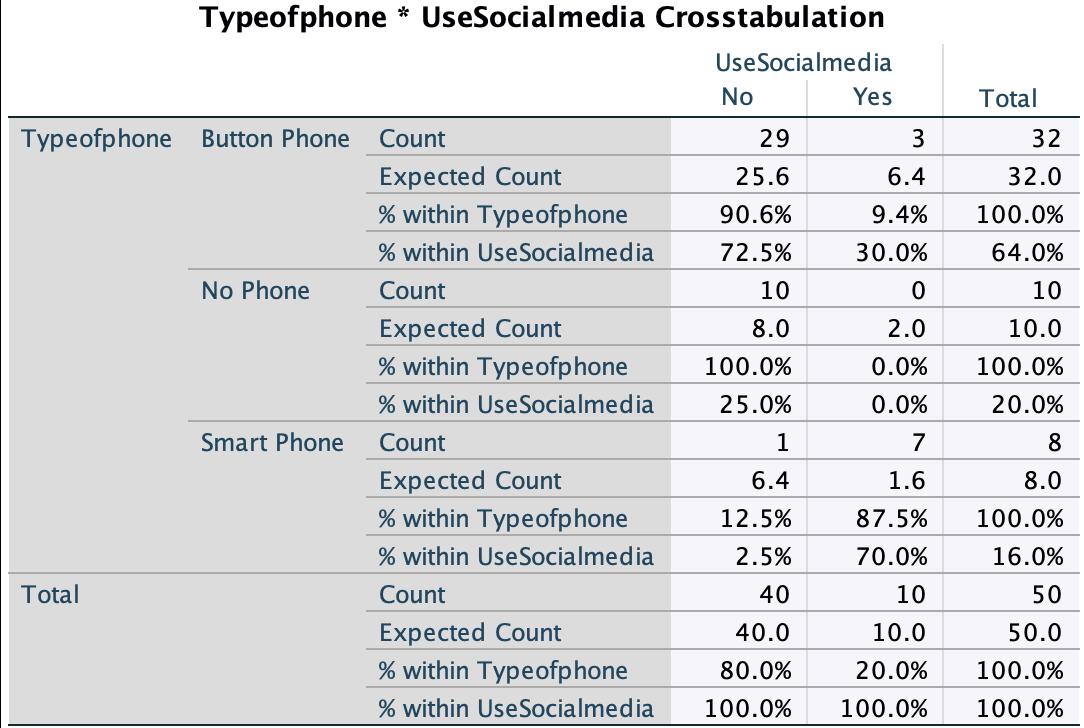
Table2detailsthedistributionofsocialmediauseacrossdifferentphonetypes,revealing adifferentcontrastinsocialmediaengagementbetweensmartphoneusersandthosewithbutton phonesornophones.Smartphoneusersexhibitedasubstantiallyhigherrateofsocialmedia activity,underscoringtheroleofdevicecapabilityinfacilitatingdigitalengagement.


